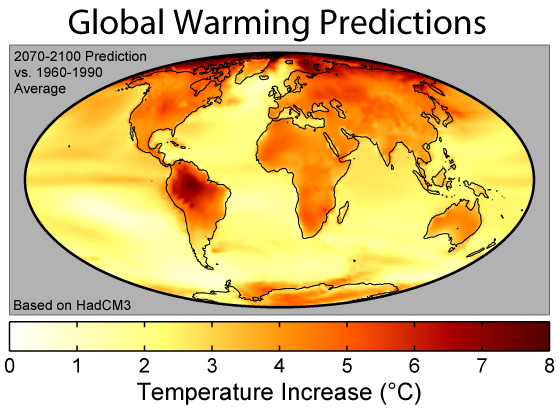By Ilissa Ocko
(This post originally appeared on EDF Voices)
Since 1990, the United Nations’ Intergovernmental Panel on Climate Change (IPCC) has released a series of reports that assess the latest data and research on climate change.
The reports are issued approximately every five years. In September 2013, the IPCC issued its newest round of reports by sharing the latest science, concluding with more confidence than ever that humans are responsible and that weather will likely get even more extreme, along with many other key findings.
The newest report, released today, looks at impacts, adaptation and vulnerability. Next month comes the thirdreport in the 3-part series that makes up the IPCC’s 5thAssessment Report (IPCC AR5); it focuses on mitigation—that is, actions to limit the magnitude and rate of climate change.
Over 600 scientists and experts from at least 70 countries were involved in writing this latest installment of the IPCC AR5, which is referred to as Working Group II. Representatives from 195 nations had to approve of the Summary for Policymakers document line-by-line.
The report’s content focuses on three topics:
- Impacts: effects of climate change on people, society, and ecosystems
- Adaptation: actions to limit our risks to climate change
- Vulnerability: the susceptibility of the human and natural worlds to climate change
Here are six key findings from the new IPCC report:
1. Climate change is now everywhere. Impacts have been found on every continent and across all oceans. Both human and natural systems are experiencing the far-reaching and ever-growing effects: water resources are shrinking; terrestrial, freshwater, and marine species have changed their ways of life; major crop yields have decreased; and heat-related deaths have risen.
2. Humans and ecosystems are both vulnerable. Climate events such as heat waves, droughts, floods, and wildfires alter ecosystems; disrupt food production and water supply; damage infrastructure and settlements; cause sickness and mortality; and adversely affect mental health and human livelihood. However, people who are socially, economically, culturally, politically, institutionally, or otherwise marginalized are especially vulnerable.
3. Food security, water resources, human health, ecosystems, and the economy are all at stake. While the degree of risks varies based on climatic and non-climatic factors, scientists are confident that human and natural systems are threatened with continued warming. ‘Runaway’ warming (a global temperature increase of 4˚C (7.2˚F) above preindustrial levels—we are currently at 0.86˚C (1.5˚F)) could make normal activities like growing food or working outdoors impossible in many regions.
4. Many global risks of climate change are concentrated in urban areas. Heat stress, extreme precipitation, inland and coastal flooding, landslides, air pollution, drought, and water scarcity pose risks in urban areas for people, assets, economies, and ecosystems.
5. Building resilience is critical to limiting risks… Even the most rigorous mitigation tactics still won’t eliminate some additional warming. The upshot: there are countless opportunities for local, state, and national governments to plan and implement adaptation efforts, and also opportunities for public and private engagements. The down side: several barriers to adaptation still exist (such as legal and financial constraints), and if heat-trapping gas emissions remain unabated and the Earth warms by 4˚C (7.2˚F), the impacts may grow larger than our capacity to adapt.
6. …but cutting heat-trapping gas emissions is essential. Delaying mitigation actions will likely reduce options for climate-resilient pathways, and make them much less affordable. Fortunately, we can solve two problems at once; examples of actions that build resilience and cut gas emissions include: improved energy efficiency and cleaner energy sources; reduced energy and water consumption in urban areas through greening cities and recycling water; sustainable agriculture and forestry; and protection of ecosystems for carbon storage and other ecosystem services.


